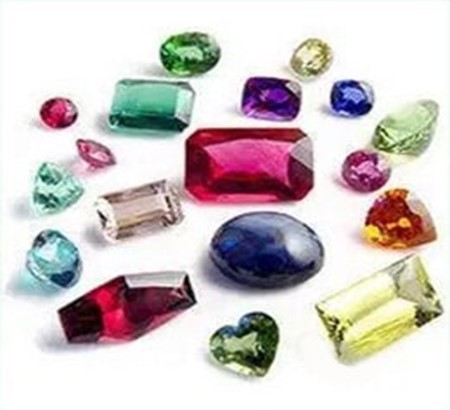GEMMOLOGY – THE SCIENTIFIC STUDY OF GEMS & CRYSTALS
Prof._RISHABH_SHASTRI
 GEMMOLOGY – THE SCIENTIFIC STUDY OF GEMS & CRYSTALS
GEMMOLOGY – THE SCIENTIFIC STUDY OF GEMS & CRYSTALS
#Astrologer #Prof. #RISHABH_SHASTRI
#Astrologer_Palmist_Numerologist_Vastuvid_Gems_Therapist_and_Astro-Guru
Gemmology is a multidisciplinary field that combines scientific knowledge, aesthetic appreciation, and practical applications in the study of gems. As an astrologer delving into the captivating world of gemmology, it is imperative to understand the fundamental principles, classifications, Various Species and Varieties, historical significance, classification systems, and inherent structural and crystal properties that contribute to the allure and value of gems.
The history of gemmology dates back to millennia, with gems occupying a central role in human cultures across civilizations. Ancient gemmologists played a pivotal roles in shaping our understanding of gemstones through identifying, classifying, and studying their properties. Drawing from this rich heritage, modern gemmologists employ scientific methodologies to analyse, treat, and evaluate gems.
Fundamental principles
Gemmology is based on the scientific principles of mineralogy, crystallography, and optical physics. By studying the mineral composition and crystal structure, gemmologists gain insights into a gem's unique properties, such as hardness, colour, refractive index, and dispersion. This knowledge enables us the identification, characterization, and differentiation of various gemstones and crystals.
Gem classification systems
There are various classification systems of Gems. Gemmologists employ classification systems to categorize gems based on various criteria, including their mineralogy, origin, colour, clarity and transparency, and cut. The most notable classification system is the Gemmological Institute of America's (GIA) Four Cs System :-- Colour, Clarity, Cut, and Carat weight. Comprehension of ding these criteria is essential for evaluating the quality and value of gemstones.
Gemmological instruments and techniques
Gemmologists employ a range of advanced instruments and techniques to conduct their analyses. Refractometers, spectrometers, polariscopes, and microscopes are commonly used to measure and assess a gem's physical and optical properties. Emerging technologies, such as Raman spectroscopy and X-ray diffraction, have revolutionized gemmological research by enabling non-destructive analysis and the identification of synthetic gems.
Identification and Treatment Of Gems
Accurate identification is essential in gemmology to differentiate natural gems from their synthetic counterparts or imitations. Gemmological laboratories utilize a combination of visual examination, gemmological instruments, and specialized knowledge to determine a gem's authenticity and origin. Additionally, gem treatments, such as heat, irradiation, or surface enhancement, are common practices used to enhance the appearance of certain gems.
The Value & Market of Gems
The value of a gemstone is dictated by a multitude of factors, including rarity, quality, origin, market, demand, and historical significance. Gemmologists play a crucial role in evaluating a gem's value through their trained eyes, expertise in market trends, and knowledge of gemmological standards. Moreover, gemmologists contribute to the ethical sourcing, certification, and sustainable practices in the gem trade.
Ethics and Sustainability In Gemmology
As people and society become more conscious of the environmental and social impacts associated with gem mining, gemmologists are at the forefront of promoting responsible practices within the industry. From advocating fair-trade gem sourcing to promote sustainable manufacturing processes, they strive to ensure the ethical and sustainable development of the gem trade.
Research and Advancements In Gemmology
The field of gemmology continues to evolve as new discoveries, technologies, and research methodologies are developed. Modern gemmologists conduct research on gemstone colour origin, inclusions, treatments, and the impact of environmental factors. Additionally, gemmology intersects with other fields such as geology, mineralogy, archaeology, and cultural studies, providing inter-disciplinary research opportunities.
Gemmology represents a captivating blend of scientific rigor, artistic appreciation, and real-world applications. As an Astrologer and Gems-Therapist, diving into the depth and breadth of gemmological studies, it is crucial to grasp the historical, scientific, and ethical aspects, while embracing the ever-evolving nature of this field. By comprehending the fundamental principles, classification systems, analytical techniques, and market dynamics, we can foster a deeper understanding and appreciation of gems, contributing to the growth and advancement of gemmology as a scientific discipline.
Thanks For Reading This Article
With Warm Wishes
Astrologer Prof._RISHABH_SHASTRi
Astrologer_Palmist_Numerologist_Vastuvid_Gems_Therapist